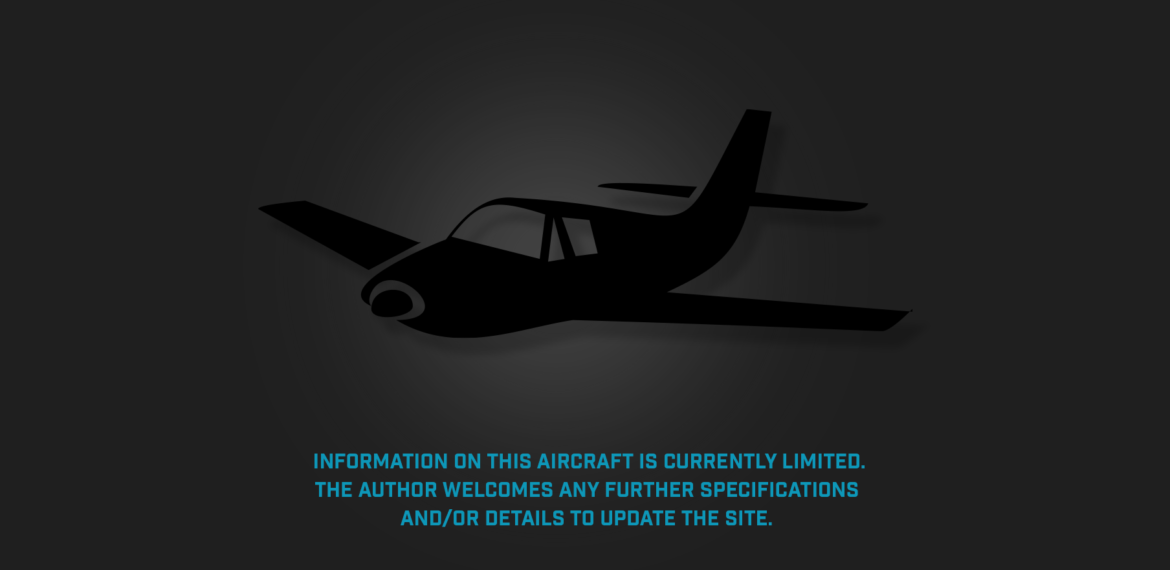Photograph:
(not yet available)
Country of origin:
Australia
Description:
Light amateur-built sport monoplane
Power Plant:
One converted Henderson four-cylinder converted motor-cycle engine
Specifications:
- Wingspan: 6.7 m (22 ft)
- Length: 5.57 m (18 ft 3 in)
- Height: 1.64 (5 ft 4 in)
- Max speed: 113 km/h (70 mph)
- Stalling speed: 56 km/h (35 mph)
- Empty weight: 170 kg (375 lb)
- Loaded weight: 240 kg (529 lb)
History:
Ernest J Strumey was born in 1890 in Singleton, NSW and passed away in 1963. In about 1912 he designed and built a pedal powered aircraft as part of his interest in aviation but this was not particularly successful. At another stage he built a glider. In about 1923 he built an aircraft similar in appearance to a Bleriot fitted with an NSU converted two-cylinder VEE motor-cycle engine, this machine being fitted with bicycle wheels. It was conveyed to Bondi, an eastern suburb of Sydney, NSW where testing was carried out on Waverley Hill. These trials were carried out for a short period but were not successful and the aircraft was broken up.
Later, in 1928, he built an aircraft of his own design at Punchbowl, NSW which in appearance was along the lines of a Heath Parasol. This was fitted with a converted Henderson motor-cycle engine. Of timber construction, it was taken to and tested at Mascot aerodrome, NSW in November 1932. During this period as part of its development a number of modifications were made. At one stage the configuration was changed from parasol wing to mid-wing. First flight was in the hands of Mr Sydney McDonell on 17 November 1932.
A number of pilots were invited to test the aircraft and in fact flew it, these including the Clancy brothers, Allan & William, Goya Henry and Ronald Gower. Mr Gower, who was involved with the Early Birds Association, recorded his views of the aircraft. On one occasion when flown by Ronald Gower the undercarriage was damaged in a heavy landing and some repairs were necessary. At another time the wheels, which had been removed from an invalid chair, were replaced by motor-cycle wheels from a Henderson.
Eventually Mr Strumey learnt to fly on a de Havilland DH.60 and took his aircraft to Bankstown, NSW. Although he had not as yet received a pilot’s licence, he flew the aircraft on a number of occasions. Later he took the aircraft to Mascot where he designed and built a pair of floats from wood, fitted them to the aircraft and made an initial flight from water from Salt Pan Creek at Herne Bay. However, it was found the floats were not long enough and, on landing, the aircraft turned over necessitating the re-design of the floats and the movement of the wing to a mid-wing configuration.
The converted Henderson motor cycle engine was used extensively by aircraft home-builders in the 1930s. It was manufactured from 1912 to 1931 by the Henderson Motorcycle Co of Detroit, Michigan and was used extensively in high-performance motor cycles. In 1917 the company was acquired by Ignaz Schwinn, who operated the companies Schwinn Bicycles and Excelsior Motor Cycles. The engine usually converted was the 67 cubic inch (1100 cc) unit which was a four-cylinder in-line engine. By the 1930s it was producing 34 kw (45 hp) at 4,500 rpm.
Subsequently Mr Strumey used the aircraft as a power-boat, towing it by vehicle to Salt Pan Creek where it was taxied and on occasion made a number of flights. After that it was re-fitted with wheels and converted back to parasol wing configuration but only made one more flight before being put into storage. It was later sold to the Australian Air League and was used for taxiing practice but suffered an accident and was destroyed by fire.

